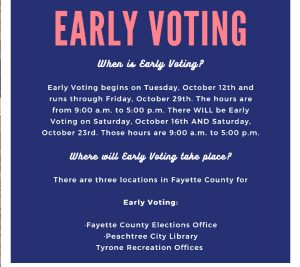Issues with the now-controversial mural behind the dais at Tyrone Town Hall, and the Sept. 7 decision to keep the mural denoting portions of the town’s history, have generated comments by Fayette NAACP President Terrence Williamson and state Rep. Derrick Jackson (D-Tyrone).
Both Williamson and Jackson wrote letters to the editor.
Commenting on the Sept. 7 Town Council meeting where council members on a 3-1 vote decided to keep the mural, Williamson said, “It is my sincere hope that Mayor (Eric) Dial and the council do not consider this to be the end of the story, but yet another interim step.”
The county NAACP head said he agrees with many that history should not be erased. “However, several other speakers pointed out that the mural as depicted does not provide an accurate representation of that history, something I also agree with. If there is going to be a mural depicting an accurate historical representation of that period behind the dais, in the publicly owned Town Hall, every effort should be made to insure that it represents the whole historical story,” Williamson said.
Freshman state Rep. Derrick Jackson (D-Tyrone) said supporters of the mural should understand that their view is not shared by many of his constituents. “Let’s be clear, at this point Tyrone’s repugnant mural is the source of contentions today, because there are Tyrone taxpayers that do not desire for their tax dollars to preserve an insensitive mural that was painted in 1996 and does not reflect Tyrone,” said Jackson.
Jackson maintained that the mural does not constitute a debate about history or heritage. “This is about requests from Tyrone taxpayers that would like their tax dollars to characterize today’s Tyrone,” he said.
Williamson questioned some of the depictions on the mural, such as the American Indian being paid for trading his crops long after the state’s Native Americans were forced to relocate via the “Trail of Tears.” And if there were slaves in Tyrone, they should be more accurately represented.
“That would include one or more of them that had been whipped or hobbled for trying to escape or worst yet, daring to learn to read and write,” said Williamson.
Advocating for a complete view and a complete representation of Tyrone’s history, Williamson said, “For me, a black man, that means understanding that there is indeed a need for compassion on behalf of those with Confederate ancestors. All I ask is for similar compassion for my ancestors, no more, no less. Maybe one day in Tyrone, Georgia, we can meet in the middle.”
Jackson suggested taxpayers contact the mayor and council and attend council meeting to voice their opinions on the mural.













Leave a Comment
You must be logged in to post a comment.